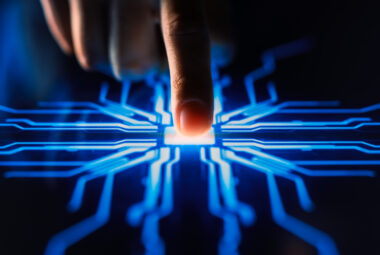
G 1/19: Patenting Computer-Implemented Simulations
It is over ten years since software patents (a.k.a. computer-implemented inventions, or CIIs) were last discussed at the level of the Enlarged Board of the EPO, the last time being when the decision in G 3/08 was issued in May 2010. That decision did not, however, change the law in any respect because the referral, which was made by a previous EPO President, was considered by the Enlarged Board to be inadmissible. In the Enlarged Board’s view there were no contradictions in the case law from the lower Boards of Appeal on the subject of CIIs, with the leading case being Comvik (T 641/00). Since then, the law both at the EPO and in the UK on CIIs has been remarkably stable, with no significant divergence or change of direction.
The decision in T 489/14, however, which issued in February 2019, attempted to put the cat among the pigeons in the field of CIIs by questioning whether the development of the case law in T 1227/05 (Infineon) was correct, or at least to what extent. The cases leading up to T 1227/05 involved methods of designing products such as integrated circuits and drill bits, with big players IBM and Halliburton respectively leading the way. There was initially resistance to patenting methods of designing products but, as the case law developed, both the EPO and the UK courts decided that in some cases it was possible to patent a method of designing without having to tie it to actually making the product. This was expected to be of help to companies involved heavily in designing complex products but where the article being designed would be manufactured by others. The decision in T 1227/05 then went further and established that it was in principle possible to patent a method of simulating an article (in this case an electronic circuit), provided the invention was limited to that specific purpose. It was not necessary to include fabricating the article itself because specific computer-implemented simulations were themselves to be regarded as patentable and not dismissed as non-inventions for being mere computer programs.
The application leading to T 489/14 also related to a simulation method, but in this case related to simulating movement of people in a building, rather than electrons in a circuit. The application described simulating people moving in a building and taking steps according to factors such as whether there was something in the way (e.g. another person or an obstacle). The application was refused because it was considered to be obvious over a general purpose computer, following the usual practice in T 641/00, although the application did cite prior art relating to previous techniques for modelling pedestrian flow in buildings. The applicant appealed, and argued that the aspects of the simulation that were based on human behaviour were modelled by equations similar to those describing the laws of physics and the application should be patentable for similar reasons as in T 1227/05. The Board saw that the applicant had a good argument but was still reluctant to allow the appeal because the simulation only assisted an engineer in the cognitive process of designing something, whether this was a circuit or a building. Instead of following T 1227/05, the Board decided that they would rather ask the Enlarged Board whether simulation methods were actually patentable. The questions put before the EB were:
1. In the assessment of inventive step, can the computer-implemented simulation of a technical system or process solve a technical problem by producing a technical effect which goes beyond the simulation’s implementation on a computer, if the computer-implemented simulation is claimed as such?
2. If the answer to the first question is yes, what are the relevant criteria for assessing whether a computer-implemented simulation claimed as such solves a technical problem? In particular, is it a sufficient condition that the simulation is based, at least in part, on technical principles underlying the simulated system or process?
3. What are the answers to the first and second questions if the computer-implemented simulation is claimed as part of a design process, in particular for verifying a design?
The oral proceedings in G 1/19 were held on 15 July 2020, attended in person by the Enlarged Board, the applicant’s representative, representatives of the EPO President and various others remotely via an internet video stream. The Enlarged Board did not give away very much in respect of what they were thinking about the questions. They did, however, indicate that they intended to consider the first question at least admissible, but had doubts about whether the second question was. The appellant argued that the bounds of what was patentable should be maintained as in T 1227/05 and should cover modelling pedestrians in buildings in the same way as electrons in circuits. The EPO President seemed to agree, arguing that methods of simulation were becoming increasingly important and in some cases provided alternative ways to taking measurements in the real world. The boundaries of what was considered patentable should therefore be allowed to develop over time. The only significant push back from the Enlarged Board was to emphasise that they were the ones who were to decide whether any question was admissible.
One illustrative example put forward by the EPO President was a method of simulating natural phenomena by ray tracing in order to generate a more realistic image. Computer rendering by ray tracing could be considered patentable because it allowed for a more realistic representation of reality, even though the output was not actually real. Whether this approach will be picked up by the Enlarged Board remains to be seen, but it does offer a potential route out of the current situation where an apparently arbitrary distinction is made between a simulation of an electronic circuit, which is considered to be patentable, and a simulation of humans in a building, which is currently not considered to be patentable. The Enlarged Board may decide, along with previous lower Boards of Appeal, that some things are just considered not to be ‘technical’ and can therefore not provide support for an invention being patentable, while others are. They could, however, take a different approach and consider the matter from the view of what a simulation does and how well it simulates reality. What they actually decide remains to be seen.



